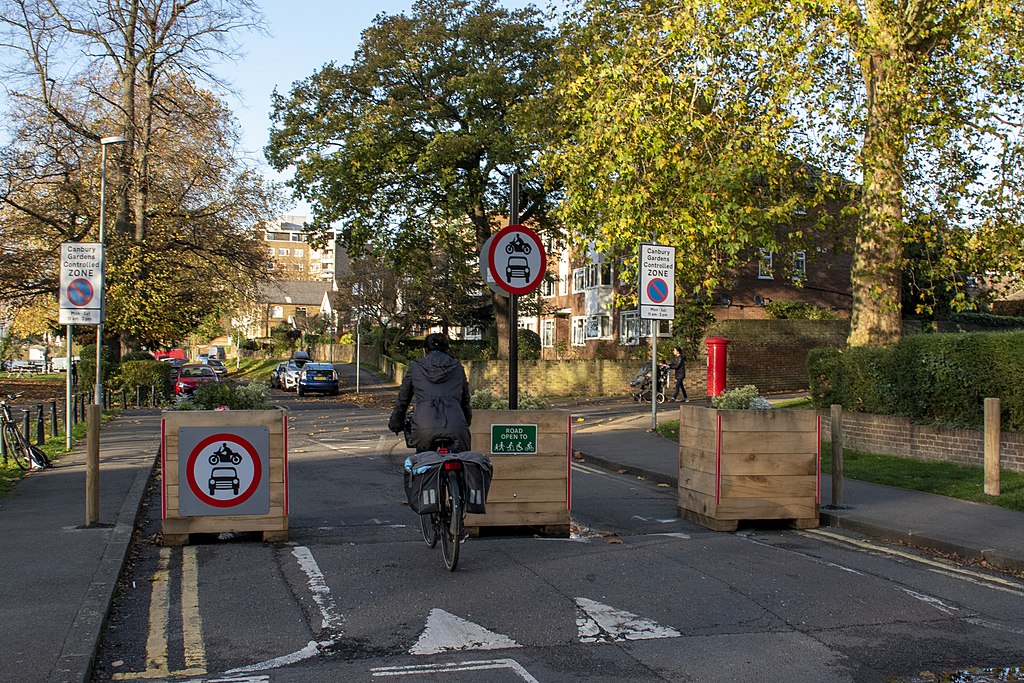Giulio Ferrini – Head of Built Environment, Sustrans
The traffic stopped, and out came the people.
The space that had been cannibalised by motor vehicles was suddenly inviting pedestrians to climb over the guard railing and children out of cramped flats. Streets became theatre stages, with children skating, parents reading on their front porches, friendly hellos from passing neighbours and people jogging without breathing in toxic fumes.
A 2-month-long car-free day, and an ambitious one like in Bogotá and Paris, unlike the previous ones in London where only a few cul-de-sacs are closed to traffic. An accidental but radical trial, and without the traffic orders.
People were hungry for public space, and they realised it could be outside their front doors, with only 9% of Britons wanting life to return to normal after lockdown. Some residents took matters into their own hands, using tactical urbanism to make space for these new street uses. Government followed, calling on cities to take urgent, radical action to reallocate road space.
The first schemes to hit the ground were on high streets and near stations – an endearingly arrogant approach, based on the presumption that we would defeat the virus in no time, returning to pre-pandemic routines.
As we gradually realised this would not be the case, we recognised the dangers of a car-led recovery: grinding cities to a halt and undoing decades of (slow) progress in decarbonising our transport network. To prevent this, city leaders were urged to transform their streets, enabling some journeys to be done by foot or bike, leaving space on the roads or public transport for those trips that couldn’t be done by other modes.
Some cities introduced pop-up cycle lanes, allowing key workers to cycle safely, while others pedestrianised city centre streets, creating Streateries to support business recovery. Changes that previously would have taken years were happening overnight.
But the stars of the show were low traffic neighbourhoods (LTNs): identified as the most cost-effective way to achieve mode shift for shorter journeys through a combination of stick and carrot.
As well as influencing travel behaviour, LTNs address the satnav-induced flooding of residential streets by motor vehicles. Over the past 10 years, all streets have become conduits for the movement of ever-larger SUVs, whose off-road suspensions annihilate feeble defences such as speed humps.
As the first LTNs went in, these streets changed from places where people wanted to travel through as quickly as possible to places where they wanted to spend time. Families walked, cycled or wheeled in the carriageway, and a glazier had to repair a window broken by children playing in the street for the first time in 20 years.
However, several of these schemes have been marred by controversy, with many implementation blunders. As trial monitoring data keeps being published, TPM will provide an opportunity to discuss lessons learnt from design to engagement and evaluation.
TPM is always a great forum for honest, open discussion not only about technical elements but also about the ethical ones, including the impacts of LTNs on disabled people, black and minority ethnic communities and marginalised genders. Gentrification and social justice have also been central to the LTN debate, and I look forward to hearing people’s opinions and evidence, away from the polarising twitter threads.

